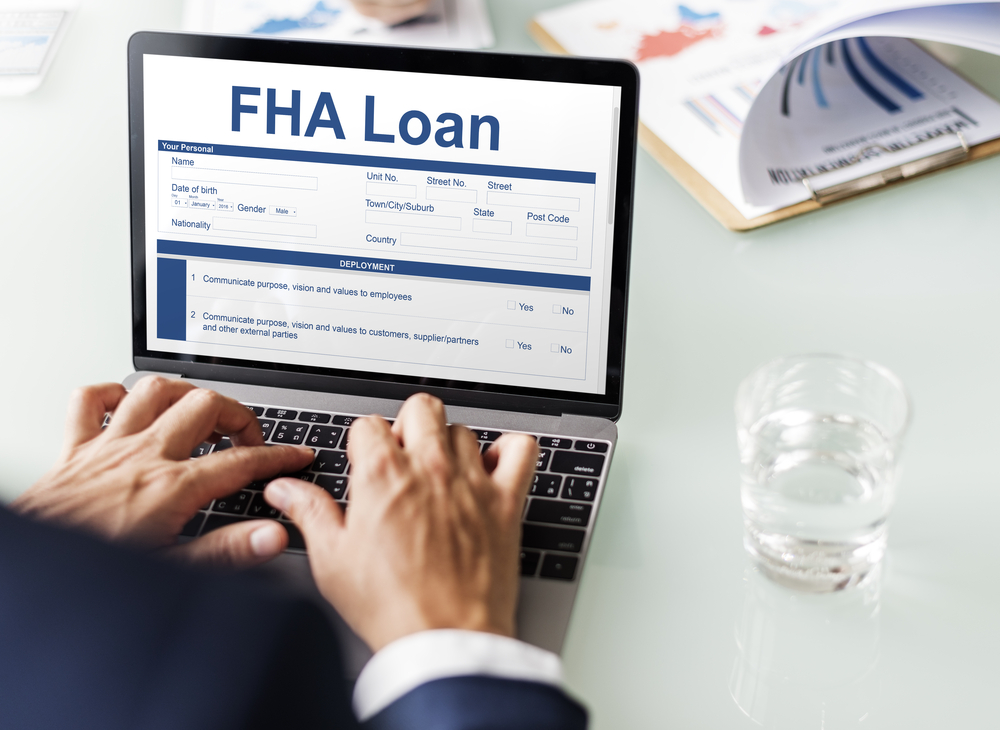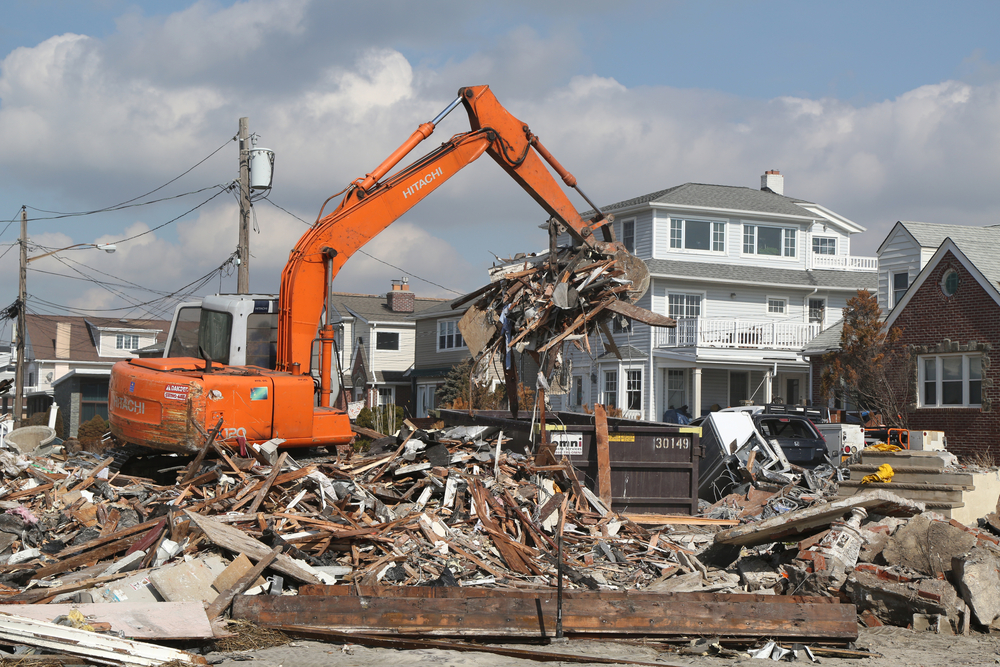Your Ultimate Guide
Looking for a way to finance your dream home from the ground up?
FHA construction-to-permanent loans might be just what you need.
This guide will walk you through how these loans work, their benefits, and steps to get one so you can confidently move forward with building your home.
Ready to learn more? Let’s dive in.
Key Takeaways
- FHA construction-to-permanent loans allow you to combine the cost of land, construction, and mortgage into one loan. This means you only have one closing process instead of two, making it easier on your wallet and reducing paperwork.
- You don’t need a perfect credit score to qualify for these loans. They are designed with flexible qualifying requirements including lower down payments as low as 3.5%, making it simpler for more people to build their dream homes.
- These loans cover various types of projects whether you’re building a new house from scratch or renovating an existing property. You can finance single-family homes, multi-unit properties up to four units, condominiums, modular homes, and even mixed-use properties under certain conditions.
- The process involves several key steps: getting preapproved for an FHA loan, finding land for construction, hiring a licensed builder who understands FHA guidelines well, getting your home appraised once built or renovated and finally transitioning from a construction loan into a standard mortgage.
- An FHA construction-to-permanent loan might be right for you if you’re looking for a streamlined financing option for both building and purchasing your home with less stress over qualification requirements and multifaceted paperwork processes.
What is an FHA construction-to-permanent loan?
An FHA construction-to-permanent loan combines two loans into one for a seamless transition from building your dream home to owning it. Initially, this loan covers the costs of land purchase, construction, and any related fees.
Once construction wraps up, the loan cleverly converts into a standard mortgage without requiring you to reapply or undergo another closing process. This unique feature makes the journey from building to living in your new home smoother and more cost-effective.
With an FHA construction to permanent loan, you don’t have to worry about juggling multiple loans or dealing with varying interest rates during the building phase. The single closing at the start locks in your mortgage rate early on, protecting you against future rate increases as you build.
Understanding these benefits will help you see why choosing this type of loan could be a great decision for financing your next big project. Now, let’s explore what advantages these loans offer that make them so appealing to prospective homeowners like yourself.
What are the benefits of FHA construction to permanent loans?

An FHA construction to permanent loan offers flexible qualifying requirements, with a single closing process for both the construction and permanent financing. You can use this type of loan for various construction projects, including new builds or renovations.
Flexible qualifying requirements
FHA construction to permanent loans stand out because they have flexible qualifying requirements. This means you don’t need a perfect credit score to get approved. Lenders look at your overall financial situation, including income and debt levels, making it easier for a wider range of people to qualify.
You also benefit from lower down payment options with these loans. While traditional mortgages often require significant down payments, FHA construction to permanent loans can ask for as little as 3.5% down.
This makes the dream of building your own home more attainable for prospective homebuyers, especially if saving up a large sum upfront is challenging.
One closing
One of the biggest benefits you’ll find with FHA construction to permanent loans is the one-time closing process. Instead of dealing with two separate closings — first for the construction loan and then for the mortgage — everything gets wrapped up in a single transaction.
This not only simplifies your paperwork but also saves you money on closing costs, making it easier for you to manage your finances during what can be a complicated homebuilding process.
This streamlined approach means less stress as you won’t have to go through the qualification process twice or worry about changing interest rates affecting your permanent financing.
With everything taken care of in one fell swoop, you can focus more on the exciting aspects of building your new home rather than getting bogged down by administrative details.
Multiple types of projects
Once you have closed on your FHA construction-to-permanent loan, you can explore the multiple types of projects that this financing option covers.
Whether you’re planning to build a new home from scratch, undertake extensive renovations and upgrades, or even add an accessory dwelling unit (ADU) to your property, an FHA construction-to-permanent loan can provide the necessary funds.
With an FHA construction-to-permanent loan, you can finance various types of residential properties — such as single-family homes, multi-unit properties with up to four units, and condominiums.
Additionally, this type of loan is also suitable for modular homes and mixed-use properties with a designated portion for residential use.
How to finance a home with an FHA construction to permanent loan
Thinking about applying for an FHA construction-to-permanent loan? Here’s the process you’ll have to navigate.
Get preapproved for an FHA loan
To finance your new home with an FHA construction to permanent loan, the first step is getting preapproved for an FHA loan. Being preapproved gives you a clear understanding of how much house you can afford and puts you in a stronger position when making an offer on your future property.
To get preapproved, gather necessary financial documents such as pay stubs, tax returns, and bank statements before contacting an FHA-approved lender. Then complete their application process, which includes providing information about your income, assets, and the type of home you’re looking to buy.
After gathering all the required documentation for the application process from a licensed builder and identifying your land, it’s time to get preapproved for the FHA loan that will make your dream home a reality.
Find your land
Once you’ve secured preapproval for your FHA loan, the next step is to find suitable land for construction. Consider factors such as location, zoning laws, and proximity to utilities.
Research local listings and work with a real estate agent specializing in land sales to identify potential plots that align with your vision and budget. Don’t forget to inquire about any restrictions or covenants that may impact your construction plans.
Upon identifying prospective land, conduct a thorough assessment of its suitability for building by consulting with builders or contractors who can evaluate the property’s topography, soil quality, drainage patterns, and accessibility.
Hire a licensed builder
When hiring a licensed builder for your FHA construction-to-permanent loan project, ensure that they have experience with this type of loan. It’s important that the builder is familiar with the specific requirements and guidelines associated with FHA loans.
A licensed builder will also be knowledgeable about building codes, zoning regulations, and permitting processes, which can help streamline the construction process and prevent potential delays.
Your chosen licensed builder should have a solid track record of completing projects on time and within budget. Additionally, they should be able to provide references from past clients and demonstrate their ability to deliver high-quality workmanship.
Get your home appraised
Once your licensed builder completes the construction, the next crucial step is to get your home appraised. An appraisal determines the fair market value of your newly constructed property.

This valuation assures lenders that they are financing a property worth its stated value and assesses whether it meets the minimum property requirements for safety and livability. The appraiser will consider various factors, including the size, location, condition, and comparable properties in the area to determine an accurate valuation.
After completing these steps, you can move forward with confidence as you prepare to close on your FHA construction-to-permanent loan and transition into a permanent mortgage for your new home.
Close on the construction loan
After your home is appraised, it’s time to close on the construction loan. At this stage, all the necessary paperwork and documentation will be finalized. You’ll sign the agreement for the construction loan, which will then enable you to start building your new home.
Remember that during this phase, you’ll also need to ensure that you meet all closing requirements set by your lender, including paying any closing costs and fees associated with the construction loan.
It’s crucial to keep in communication with your lender throughout this process so that everything goes smoothly as you move from the appraisal stage into closing on the construction loan.
Switch to a permanent loan
Once your home construction is complete, you can easily switch to a permanent loan with the same lender. This process involves converting your construction loan into a traditional FHA mortgage.
Your lender will help you transition smoothly, ensuring that all necessary paperwork and steps are completed.
After the final inspection of your newly constructed home, it’s time to move from the temporary financing phase to a permanent one. The conversion typically involves filling out some forms and providing updated financial information as required by your lender.
FHA construction-to-permanent loans: FAQs
Here are the answers to the most common questions we’re hearing about FHA construction-to-permanent loans.
What is an FHA 203(k) rehabilitation loan?
An FHA 203(k) rehabilitation loan is a type of mortgage that combines the cost of home repairs and renovations into the loan. It enables you to purchase or refinance a property and include funds for rehabilitating or improving it in a single mortgage, simplifying the process.
This option might be suitable if you’re considering purchasing a fixer-upper or making significant improvements to your existing home. With an FHA 203(k) rehabilitation loan, you can finance repairs and upgrades such as structural alterations, room additions, kitchen remodeling, energy conservation improvements, and more all in one package.
How do you qualify for an FHA construction loan?
To qualify, you need a credit score of at least 580 and a down payment of at least 3.5%. You also need to have a stable employment history or have worked for the same employer for the last two years.
Additionally, your debt-to-income ratio should typically not exceed 43%, although there can be some flexibility based on compensating factors like a higher down payment or cash reserves.
To meet FHA loan requirements, your new home must also comply with local building codes and HUD guidelines. An experienced builder will submit plans that meet these standards during the pre-approval process before any funds are dispersed.
What are the challenges of FHA construction loans?
Before proceeding with an FHA construction loan, it’s important to understand the challenges involved. One of the key obstacles is finding a licensed contractor who meets stringent FHA requirements for experience and financial stability.
Additionally, managing the draw process to pay your builder according to the project timeline can be complex and time-consuming. Proper documentation and adherence to strict lender guidelines throughout the construction phase are also essential challenges that need careful navigation.
These factors make FHA construction loans more intricate compared to traditional home financing options.
Is an FHA construction-to-permanent loan right for you?
An FHA construction to permanent loan may be right for you if you are looking for a one-time close and want to build or renovate your own home. This type of loan offers flexible qualifying requirements, making it accessible to many prospective homebuyers.
Whether you are interested in purchasing a fixer-upper or building a new home from the ground up, an FHA construction-to-permanent loan can provide the financial support you need.
Before committing to this type of loan, however, it’s essential to carefully consider your financial situation and long-term homeownership goals. Additionally, consulting with a qualified lender can help you determine if an FHA construction to permanent loan aligns with your specific needs and preferences.
FHA construction-to-permanent loan: More FAQs
1. What is an FHA construction-to-permanent loan?
An FHA construction-to-permanent loan helps you finance the building of your house and then turns into a permanent mortgage.
2. Do I need a high credit score to qualify for this loan?
You don’t need a perfect credit score, but having a good credit score can improve your chances of getting approved.
3. Can I use this loan to renovate my existing home?
No, this loan is specifically for financing the construction of new homes, not for renovations.
4. How much down payment do I need for an FHA construction-to-permanent loan?
You typically need a minimum down payment of 3.5% of the total cost to qualify for this type of loan.
5. Will I have two separate loans during and after construction?
No, you will start with one loan that covers both the construction phase and transitions into your permanent mortgage once construction is complete.
When it comes to buying a property, every financial decision you make is a major one. Rather than going through the process on your own, you’re best off partnering with a mortgage expert who can help you explore your options and choose the best solution for your unique circumstances.
Disclaimer:
The content provided on this website is offered for educational purposes only. While we endeavor to provide accurate and up-to-date information, we make no representations or warranties of any kind, express or implied, about the completeness, accuracy, reliability, suitability, or availability of the content for any purpose. Visitors are advised to consult with qualified experts before making any financial decisions or taking any actions based on the information provided on this website.

